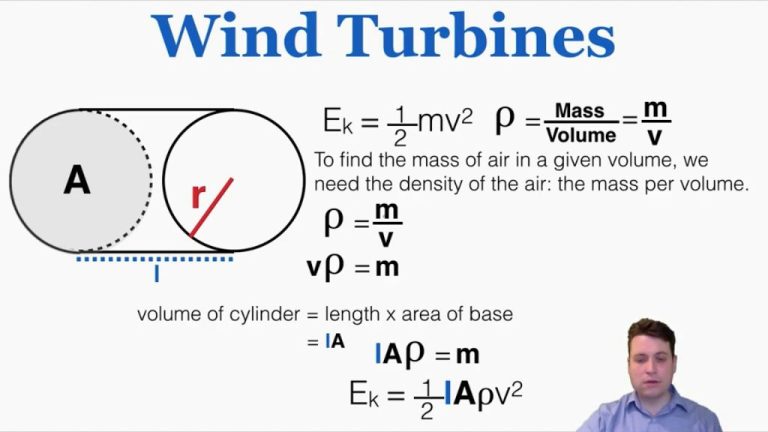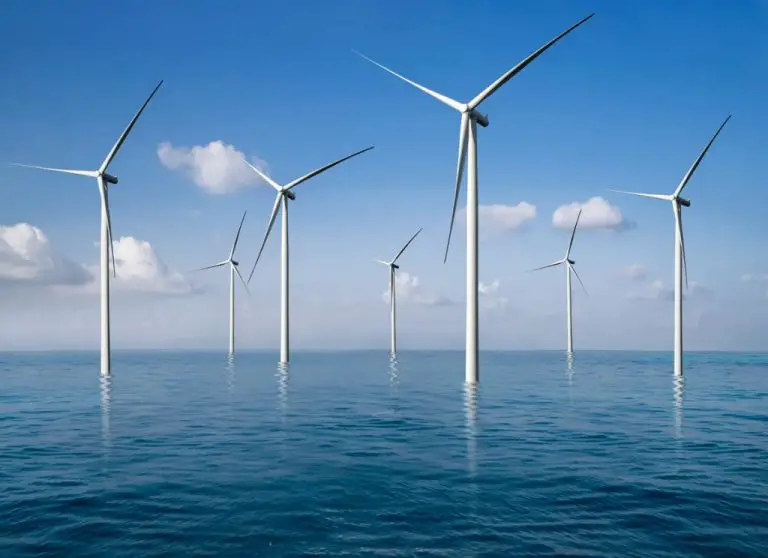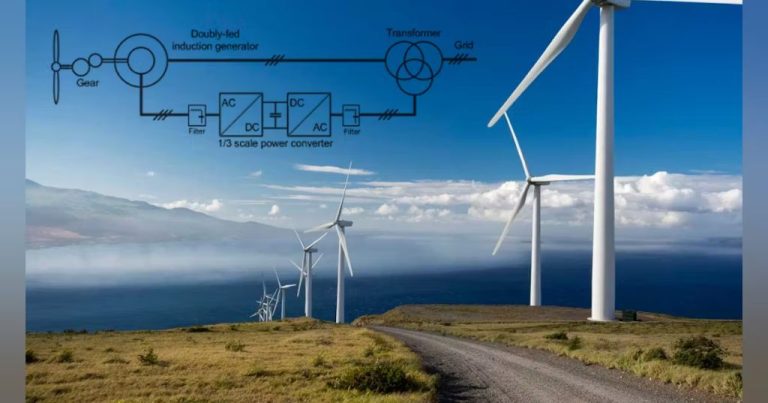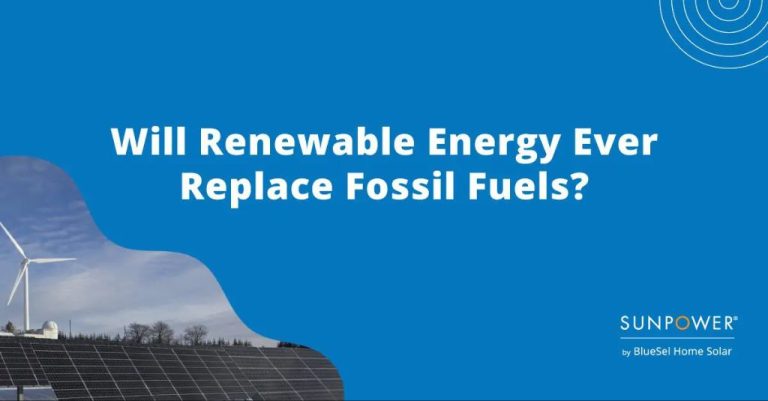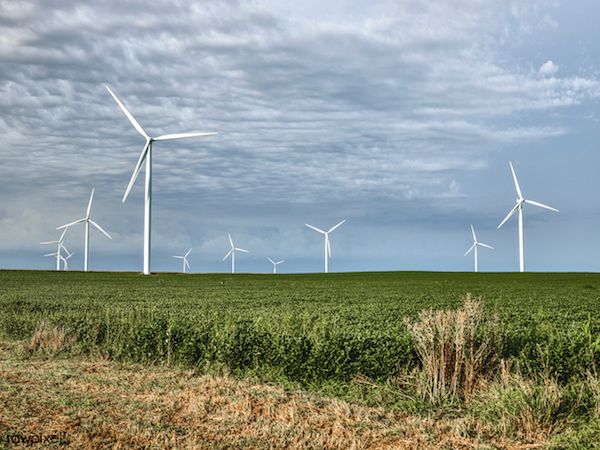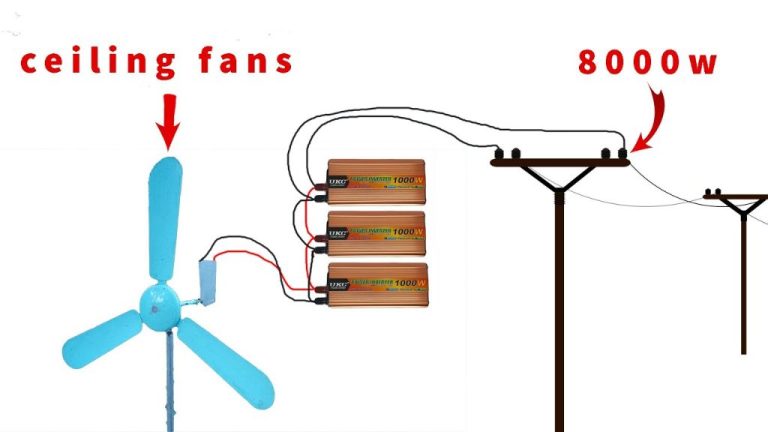What Type Of Energy Does Wind Turn Into?
What is Wind Energy?
Wind energy is the kinetic energy generated from the movement of air currents across the earth’s surface. Wind is a renewable energy source that is continuously replenished through natural processes driven by the sun. As long as the sun shines, the winds will blow and wind energy will be available to harness.
Wind energy comes from air flow across the earth’s surface. This airflow is created by the uneven heating of the atmosphere by the sun, the rotation of the earth, and the earth’s terrain. As warm air rises, cooler air rushes in to take its place, creating wind currents. This wind energy can be captured and converted into other useful forms of energy.
How Wind Energy Works
Wind energy is captured by wind turbines, which are used to generate electricity. Wind turbines are mounted on tall towers in areas with consistent wind patterns. When the wind blows, it causes the blades of the wind turbine to rotate. This rotation contains kinetic energy from the wind. The spinning blades turn a shaft inside the wind turbine, which is connected to a generator. As the shaft spins, it converts the wind’s kinetic energy into mechanical power. The generator then converts this rotational mechanical power into electricity by inducing rotor magnets to spin around a coil of copper wire. In this way, the generator harvests the kinetic energy of the wind and converts it into electrical energy for human use and consumption.
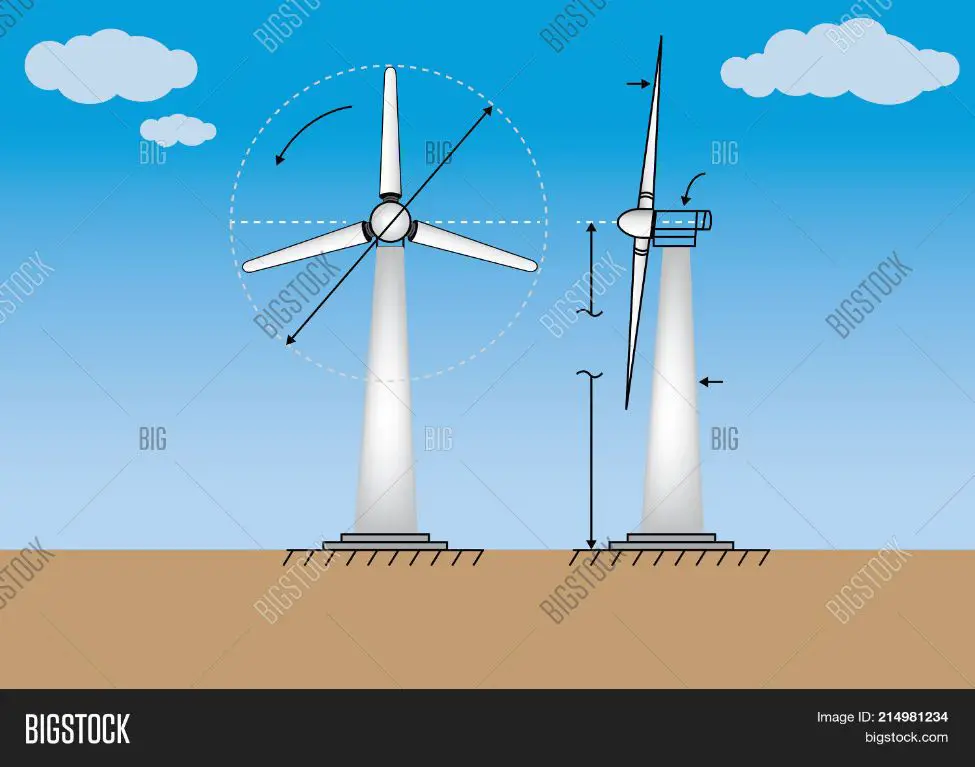
Types of Wind Turbines
There are two main types of wind turbines used today – vertical axis turbines and horizontal axis turbines. The designs have different advantages and disadvantages.
Vertical Axis Turbines
Vertical axis wind turbines, as the name suggests, have a vertical rotor shaft. The main advantage of this design is that the turbine does not need to be pointed into the wind to be effective. This makes vertical axis turbines easier to maintain and suitable for locations where wind direction is highly variable. However, overall they are less efficient than horizontal axis turbines.
Horizontal Axis Turbines
Horizontal axis wind turbines have the main rotor shaft mounted horizontally. The turbine blades face into the wind and must be rotated to track the wind direction. Horizontal axis turbines are generally more efficient than vertical axis turbines. They have become the dominant design for utility-scale wind farms. The size and specific design of the blades can be tailored for different wind conditions.
Overall, both vertical and horizontal axis turbines are widely used. The choice depends on factors like location wind variability, desired power output, and maintenance requirements. Advances in materials and technology continue to drive new variations in size and design.
Wind Energy Conversion Process
The wind energy conversion process starts with the wind turning the blades of the wind turbine. The turbine blades are connected to a rotor which spins a shaft inside the nacelle (housing unit) at the top of the turbine. Gears inside the nacelle connect the spinning shaft to an electrical generator. As the shaft spins, it rotates magnets inside coils of copper wire within the generator. This rotation of magnets inside the coils produces an electrical current. Through this electromagnetic induction process, the generator converts the rotational mechanical energy from the spinning turbine blades into electrical energy.
The amount of electrical power output depends on the wind speed turning the turbine blades. Faster wind speeds spin the turbine blades faster, which rotates the shaft and generator at higher speeds to produce more electrical output. The output electrical power can range from just a few kilowatts for small home turbines to several megawatts for large commercial wind turbines.
Transmission of Wind Energy
Once the wind energy has been converted into electrical energy by the wind turbine, it needs to be transmitted to the electrical grid so that it can be distributed to homes, businesses and other facilities. The electricity generated from the wind turbines flows through transformers located in the base of the wind turbine tower or nearby in a substation. These transformers step up the voltage to a higher level so the electricity can be efficiently transmitted over long distances on transmission lines with minimal line losses.
The transmission lines carry the electricity from the wind farm to a substation where voltage levels are stepped up again by transformers before feeding into high voltage transmission lines that are part of the main power grid. Sophisticated monitoring, control and communications systems track the generation from each wind turbine and the entire wind farm to ensure maximum efficiency.
By stepping up the voltage to high levels (such as 345,000 volts), the electricity from the wind farm can be transmitted hundreds of miles over the transmission system with very little energy loss, making wind power feasible from remote windy areas to populated load centers.
Wind Energy Storage
Wind power presents some unique challenges when it comes to energy storage. Unlike traditional power plants that can be ramped up or down to meet demand, wind turbines generate power intermittently depending on wind conditions. At times when turbines are generating excess electricity, effective storage solutions are needed to capture that potential energy rather than curtailing the turbines.
Several technologies can provide grid-scale storage for wind energy:
- Batteries: Large battery systems can store electricity for periods of minutes to hours. Lithium-ion batteries are a popular emerging solution, though flow batteries also show promise for longer duration storage. Battery storage provides an efficient way to smooth out short-term fluctuations in wind generation.
- Pumped hydroelectric storage: This method pumps water uphill into a reservoir during times of excess generation. When power is needed, water is released downhill through turbines to regenerate electricity. Pumped hydro allows gigawatt-hours of energy to be stored for days at a time.
- Compressed air energy storage: With this approach, excess electricity is used to compress air in underground geologic formations or containers. The pressurized air can later turn turbines to produce power on demand. Like pumped hydro, compressed air storage offers large-capacity, long-duration storage.
Wind energy storage technologies help maximize the utilization of intermittent wind generation. As renewable penetration increases globally, cost-effective grid-scale storage solutions will become increasingly critical.
Wind Energy Capacity
Global installed wind energy capacity reached over 650 gigawatts (GW) by the end of 2019. China leads the world with over 236 GW of capacity, followed by the United States at over 105 GW. Europe, India, and the rest of the world make up the remaining installed wind capacity. Offshore wind accounts for about 5% of global wind capacity, but has huge potential for future growth.
The U.S. Department of Energy estimates the potential U.S. offshore wind capacity at more than 2,000 GW, which is almost double the nation’s current electricity use. As technology improves and costs decline, offshore wind is expected to expand significantly. According to the International Energy Agency, global offshore wind capacity may increase 15-fold and reach 230 GW by 2030.
Overall, wind power is one of the fastest growing renewable energy sources. The Global Wind Energy Council projects worldwide wind capacity to reach over 2,100 GW by 2030. With increasingly competitive costs and proven large-scale deployment, wind energy is poised to make up an ever greater share of electricity generation.
Wind Energy Costs
The costs of wind power have fallen dramatically over the past decade. Installing a wind turbine today costs between $1.3 – 2.2 million per megawatt of nameplate capacity, depending on the size and type of the system. Once established, wind turbines have low operating costs but no fuel costs. The operating costs mostly cover regular maintenance and repairs. Onshore wind is one of the cheapest forms of electricity generation, costing between $0.04 – $0.06 per kilowatt-hour, according to Lazard’s 2020 Levelized Cost of Energy analysis. In some parts of the U.S., wind costs less than coal and natural gas on a per-kilowatt-hour basis.
Government subsidies and incentives have helped reduce the cost of wind energy. These include production tax credits, investment tax credits, accelerated depreciation schedules, and loan guarantees. The federal renewable electricity production tax credit has provided a per-kilowatt-hour tax credit to wind projects for the first 10 years of operation. Some states also provide additional incentives like renewable portfolio standards which require utilities to get a certain percentage of their electricity from renewables. The declining costs of wind energy mean subsidies are becoming less critical for the economics of wind projects.
Environmental Benefits
Using wind energy to produce electricity provides significant environmental benefits compared to fossil fuel-based energy generation. The primary advantage is that wind turbines produce virtually no emissions during operation. Generating electricity from wind emits no air or water pollution, greenhouse gases, or other hazardous byproducts. According to the U.S. Environmental Protection Agency, generating electricity from wind in 2018 avoided an estimated 200 million metric tons of carbon pollution. That’s equivalent to taking 43 million cars off the road for an entire year.
Harnessing wind energy also reduces dependence on fossil fuels like coal, natural gas, and oil. Wind turbines can generate clean renewable electricity without extracting and burning dirty fossil fuels. In many places, wind power is an abundant local resource that can offset fossil fuel imports from elsewhere. Wind energy diversifies the energy supply and reduces the environmental and economic risks associated with relying too heavily on a single fuel source.
While wind power offers environmental advantages, some argue it also poses risks to wildlife, habitats, and landscapes. Proper siting, design, construction, and oversight during wind farm operations can help avoid and minimize negative impacts. Birds and bats occasionally collide with turbine blades, but advanced technologies and detection systems can reduce those accidents. Some critics are also concerned with views and noise, but visual and audio effects can be mitigated through community engagement, siting considerations, and technology improvements.
Future of Wind Power
Wind energy technology is rapidly improving, leading to greater efficiency and capacity in the future. Companies are investing in larger and more advanced turbines able to generate more electricity at lower wind speeds. Additionally, new designs like vertical axis turbines may supplement traditional horizontal axis turbines in some areas.
Offshore wind farms are being built further from shore and in deeper waters, taking advantage of stronger and more consistent winds. Floating offshore turbines are also being developed that can be positioned in optimal ocean locations. According to the International Energy Agency, the global offshore wind capacity will increase 15-fold and attract around $1 trillion of cumulative investment by 2040.
Airborne wind energy is an emerging technology that uses tethered drones, kites, or gliders to harvest wind energy at higher altitudes where winds are faster and more consistent. Although still in early development stages, airborne wind has the potential to access winds at a higher capacity factor and lower cost.
With these improvements in wind turbine technology, capacity factor increases, advanced grid integration solutions, and expanded global investment, wind power is positioned to supply 20-25% of global electricity needs by 2040.

